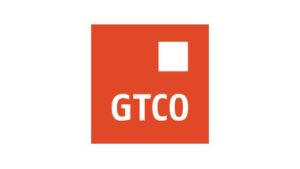Ghana’s Inflation Hits 23.8% in December, Fueled by Rising Food Prices

Ghana’s consumer inflation rate has risen for the fourth consecutive month, reaching 23.8 percent year-on-year in December 2024, up from 23 percent in November, according to the latest data from the Ghana Statistical Service (GSS), released on Wednesday. The increase in inflation is primarily attributed to a significant rise in food prices, which has been a major driver of the overall inflation rate.
During a press conference, Government Statistician Samuel Kobina Annim explained that the surge in inflation was largely due to the higher cost of food items. He pointed out that this marked the third highest inflation rate in the past 13 months and the highest inflation rate recorded in the last eight months. “The rate of inflation… is the third highest in the last 13 months and the highest in the last eight months,” Prof. Annim said, emphasizing the ongoing challenges facing the economy.
The Role of Food Prices in Inflation
Food inflation saw a sharp increase, rising to 27.8 percent in December, up from 25.9 percent in November. This increase in food inflation significantly contributed to the overall rise in the inflation rate. Specific food items, particularly yams, saw dramatic year-on-year price hikes of 63.3 percent. The high cost of food has become a critical concern for many Ghanaians, as it affects household budgets and the overall cost of living. Despite the sharp increase in food inflation, non-food inflation experienced a slight decrease, falling to 20.3 percent in December from 20.7 percent in November.
Additionally, inflation for locally produced items climbed to 26.4 percent in December, compared to 25.4 percent in the previous month, highlighting the pressure on domestic production. On the other hand, inflation for imported goods showed a small increase, rising to 17.9 percent in December from 17.6 percent in November. This suggests that both locally produced and imported goods are experiencing inflationary pressures, though the impact on food prices is more pronounced.
The sectors contributing most significantly to the overall inflation include alcoholic beverages, tobacco, and narcotics (28.4 percent); food and non-alcoholic beverages (27.8 percent); and housing, water, electricity, gas, and other fuels (26.3 percent). These sectors, especially food and housing-related expenses, are crucial to the daily lives of citizens, and the inflation in these areas is placing considerable strain on household budgets.
Regional Differences in Inflation
Inflation rates vary significantly across Ghana’s regions. The Upper East Region recorded the highest regional inflation rate at 40.6 percent, highlighting regional disparities in price increases. In contrast, the Eastern Region had the lowest inflation rate at 16.8 percent. This disparity suggests that different regions are experiencing varying degrees of inflationary pressure, which could be influenced by factors such as local production, demand, and regional economic conditions.
Calls for Comprehensive Policy Interventions
Prof. Annim emphasized that a comprehensive approach is needed to address inflation in Ghana, focusing on both monetary and real-sector issues. He pointed out that tackling food inflation should be a priority, particularly the rising prices of locally produced food items, which are an essential part of the average Ghanaian’s diet. “We do emphasise that there are two perspectives in addressing inflation. One is the monetary side… and the other is the real side, with what we’ve seen with food inflation, more particularly the food that we consume, that are locally produced,” he explained.
In light of this, Prof. Annim urged policymakers to take a broad and diversified approach to stabilizing food prices. He suggested that policymakers focus on improving the local food production system, enhancing value chains, addressing transportation challenges, expanding warehousing facilities, and reducing post-harvest losses. These interventions, according to him, would help reduce food price volatility and ensure a more stable food supply.
“Policymakers [should] put in diverse interventions, rather than focusing on, let’s say, only exchange rate or focusing on just some selected items that do not cover the variety of food items that influence food prices,” he stressed. Such a comprehensive strategy, he argued, would be more effective in curbing inflation and addressing the underlying causes of rising prices in the food sector.
As President John Dramani Mahama begins his second term in office, he has pledged to prioritize efforts to tackle inflation and stabilize the local currency. These measures are seen as critical to alleviating the cost-of-living crisis that many Ghanaians are currently facing. President Mahama has promised to take a proactive approach in addressing the inflation challenges while focusing on strategies to boost economic growth and improve the living standards of Ghanaians.








